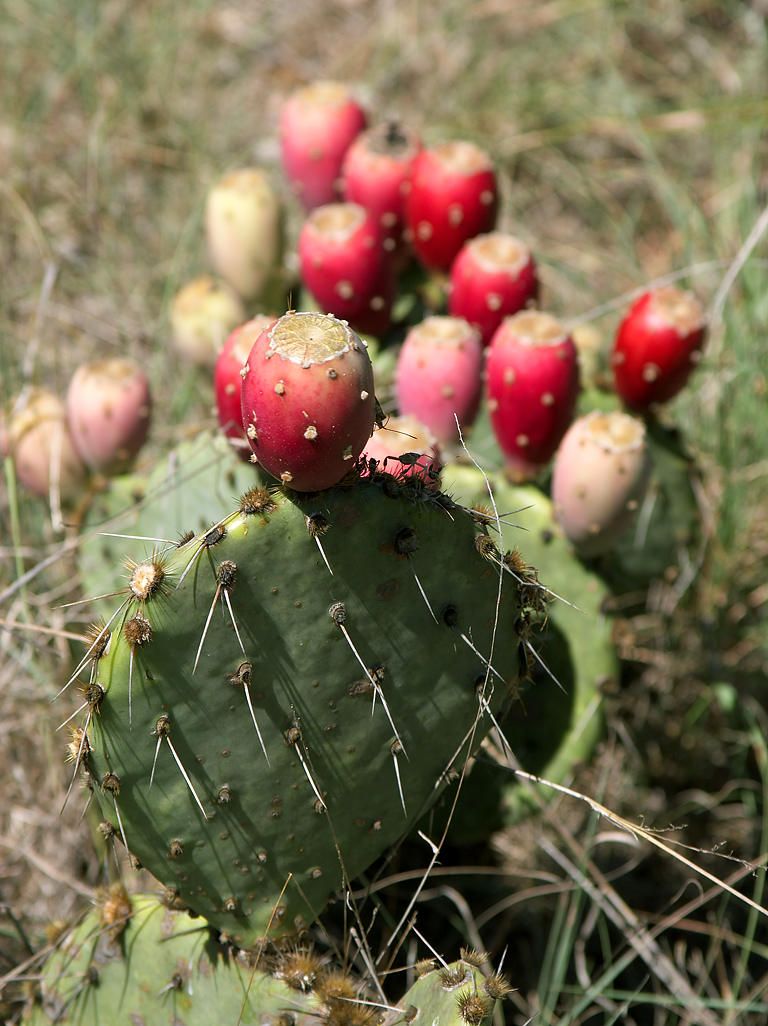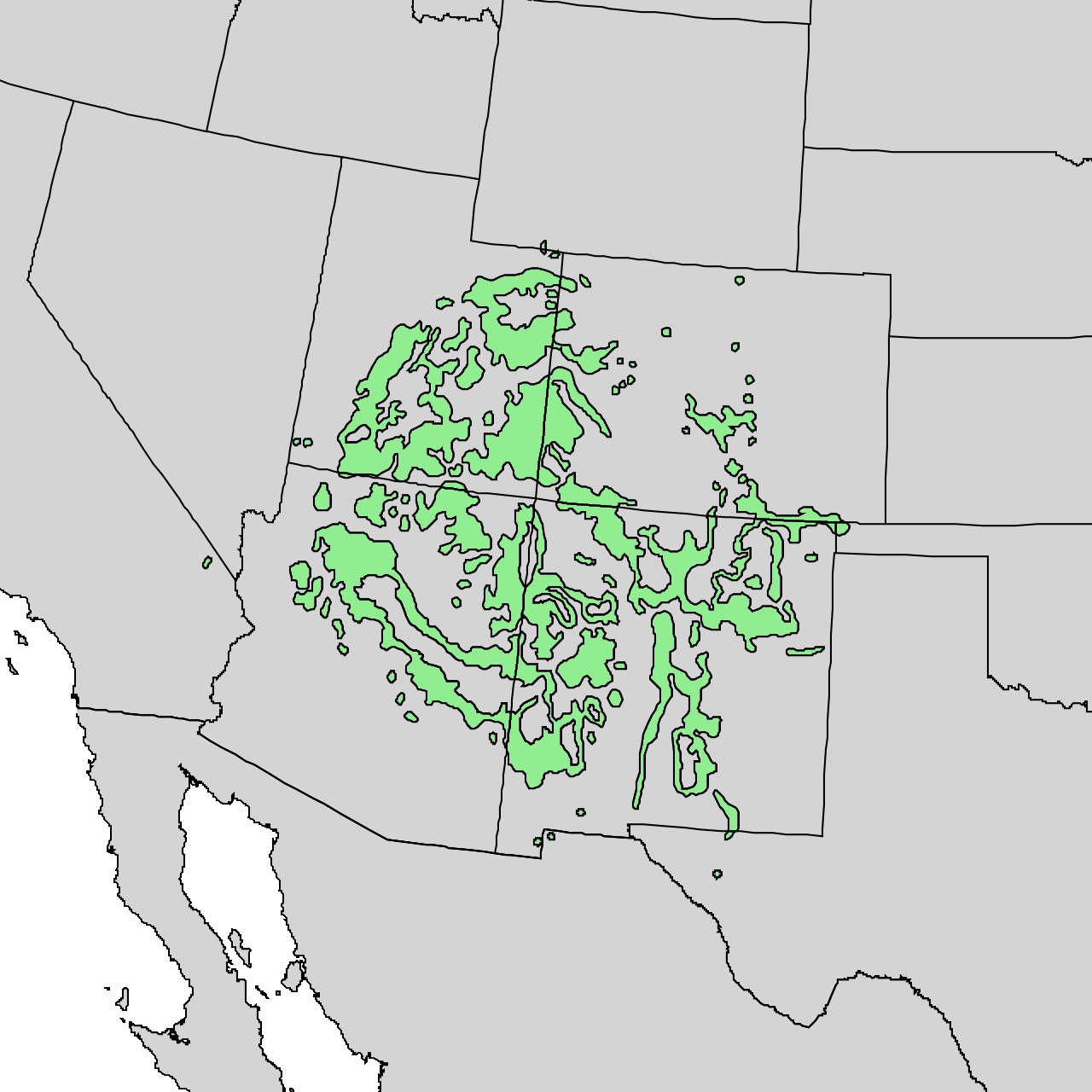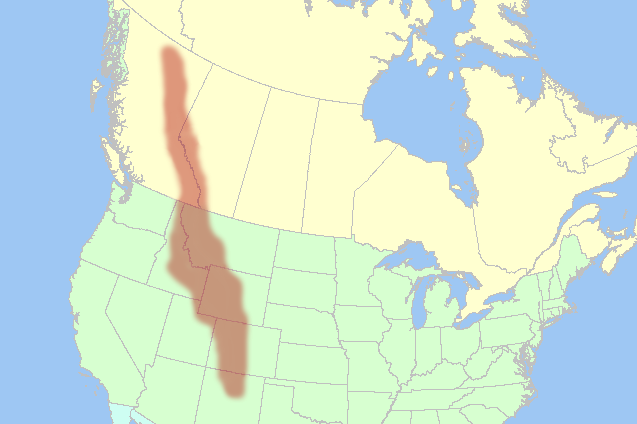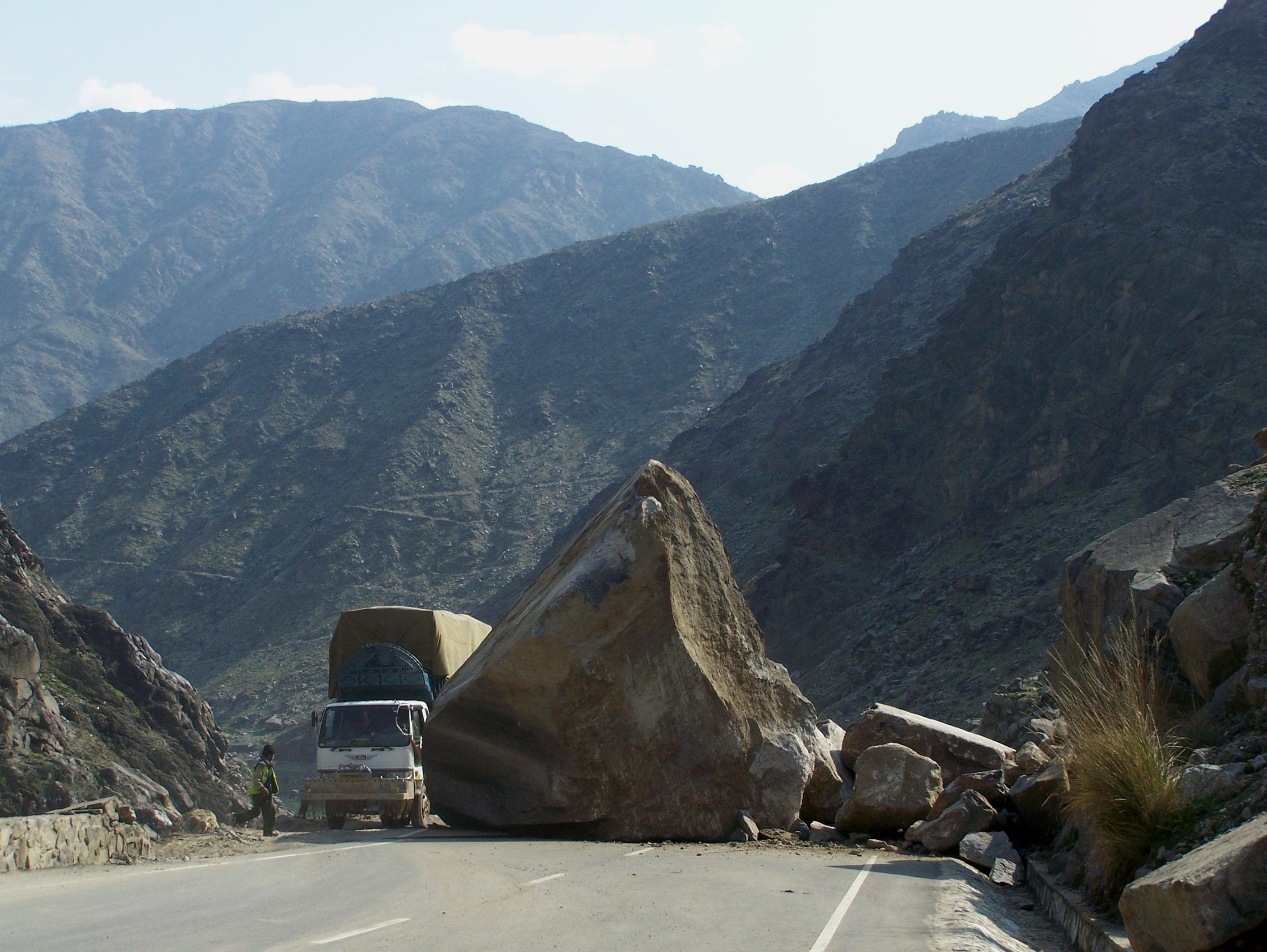|
Hickman Bridge
Hickman Natural Bridge is a 125-foot-tall (38 m) natural bridge located in Capitol Reef National Park, Wayne County, Utah, United States. The formation spans 133 feet (40 meters), making it one of the largest rock spans in the park. Geology The sandstone bridge was carved out of a geological formation known as the Kayenta Formation 65 million years ago, formed by flowing water coursing down the rock fin and eventually breaking through the soft shale. Large basalt and andesite boulders of volcanic origin were deposited by melting glacial debris flows from the cliffs of Boulder and Thousand Lakes mountains west of the park. Hickman Bridge spans what is now a Arroyo (watercourse), dry wash. History Because of its close proximity to the Fremont River, the Capitol Reef region was first settled by prehistoric Fremont people, followed by the Paiutes between 300 and 1300 C.E. Petroglyph panels as well as the remains of a granary and pithouse can be seen on the canyon walls and along ... [...More Info...] [...Related Items...] OR: [Wikipedia] [Google] [Baidu] |
Rock Arch
A natural arch, natural bridge, or (less commonly) rock arch is a natural landform where an arch has formed with an opening underneath. Natural arches commonly form where inland cliffs, coastal cliffs, fins or stacks are subject to erosion from the sea, rivers or weathering (subaerial processes). Most natural arches are formed from narrow fins and sea stacks composed of sandstone or limestone with steep, often vertical, cliff faces. The formations become narrower due to erosion over geologic time scales. The softer rock stratum erodes away creating rock shelters, or alcoves, on opposite sides of the formation beneath the relatively harder stratum, or caprock, above it. The alcoves erode further into the formation eventually meeting underneath the harder caprock layer, thus creating an arch. The erosional processes exploit weaknesses in the softer rock layers making cracks larger and removing material more quickly than the caprock; however, the caprock itself continues to erod ... [...More Info...] [...Related Items...] OR: [Wikipedia] [Google] [Baidu] |
Mormons
Mormons are a Religious denomination, religious and cultural group related to Mormonism, the principal branch of the Latter Day Saint movement started by Joseph Smith in upstate New York during the 1820s. After Smith's death in 1844, the movement split into several groups following different leaders; the majority followed Brigham Young, while smaller groups followed Joseph Smith III, Sidney Rigdon, and James Strang. Most of these smaller groups eventually merged into the Community of Christ, and the term ''Mormon'' typically refers to The Church of Jesus Christ of Latter-day Saints membership statistics, members of the Church of Jesus Christ of Latter-day Saints (LDS Church), as today, this branch is far larger than all the others combined. People who identify as Mormons may also be independently religious, secular, and non-practicing or belong to List of denominations in the Latter Day Saint movement, other denominations. Since 2018, the LDS Church has requested that its memb ... [...More Info...] [...Related Items...] OR: [Wikipedia] [Google] [Baidu] |
Köppen Climate Classification
The Köppen climate classification is one of the most widely used climate classification systems. It was first published by German-Russian climatologist Wladimir Köppen (1846–1940) in 1884, with several later modifications by Köppen, notably in 1918 and 1936. Later, the climatologist Rudolf Geiger (1894–1981) introduced some changes to the classification system, which is thus sometimes called the Köppen–Geiger climate classification system. The Köppen climate classification divides climates into five main climate groups, with each group being divided based on seasonal precipitation and temperature patterns. The five main groups are ''A'' (tropical), ''B'' (arid), ''C'' (temperate), ''D'' (continental), and ''E'' (polar). Each group and subgroup is represented by a letter. All climates are assigned a main group (the first letter). All climates except for those in the ''E'' group are assigned a seasonal precipitation subgroup (the second letter). For example, ''Af'' i ... [...More Info...] [...Related Items...] OR: [Wikipedia] [Google] [Baidu] |
Mountain Lions
The cougar (''Puma concolor'') is a large cat native to the Americas. Its range spans from the Canadian Yukon to the southern Andes in South America and is the most widespread of any large wild terrestrial mammal in the Western Hemisphere. It is an adaptable, generalist species, occurring in most American habitat types. This wide range has brought it many common names, including puma, mountain lion, catamount and panther (for the Florida sub-population). It is the second-largest cat in the New World, after the jaguar (''Panthera onca''). Secretive and largely solitary by nature, the cougar is properly considered both nocturnal and crepuscular, although daytime sightings do occur. Despite its size, the cougar is more closely related to smaller felines, including the domestic cat (''Felis catus'') than to any species of the subfamily Pantherinae. The cougar is an ambush predator that pursues a wide variety of prey. Primary food sources are ungulates, particularly deer, but ... [...More Info...] [...Related Items...] OR: [Wikipedia] [Google] [Baidu] |
Bighorn Sheep
The bighorn sheep (''Ovis canadensis'') is a species of sheep native to North America. It is named for its large horns. A pair of horns might weigh up to ; the sheep typically weigh up to . Recent genetic testing indicates three distinct subspecies of ''Ovis canadensis'', one of which is endangered: ''O. c. sierrae''. Sheep originally crossed to North America over the Bering Land Bridge from Siberia; the population in North America peaked in the millions, and the bighorn sheep entered into the mythology of Native Americans. By 1900, the population had crashed to several thousand, due to diseases introduced through European livestock and overhunting. Taxonomy and genetics ''Ovis canadensis'' is one of two species of mountain sheep in North America; the other species being ''O. dalli'', the Dall sheep. Wild sheep crossed the Bering land bridge from Siberia into Alaska during the Pleistocene (about 750,000 years ago) and subsequently spread through western North America as far ... [...More Info...] [...Related Items...] OR: [Wikipedia] [Google] [Baidu] |
Prickly Pear Cactus
''Opuntia'', commonly called prickly pear or pear cactus, is a genus of flowering plants in the cactus family Cactaceae. Prickly pears are also known as ''tuna'' (fruit), ''sabra'', ''nopal'' (paddle, plural ''nopales'') from the Nahuatl word for the pads, or nostle, from the Nahuatl word for the fruit; or paddle cactus. The genus is named for the Ancient Greek city of Opus, where, according to Theophrastus, an edible plant grew and could be propagated by rooting its leaves. The most common culinary species is the Indian fig opuntia (''O. ficus-indica''). Description ''O. ficus-indica'' is a large, trunk-forming, segmented cactus that may grow to with a crown of over in diameter and a trunk diameter of . Cladodes (large pads) are green to blue-green, bearing few spines up to or may be spineless. Prickly pears typically grow with flat, rounded cladodes (also called platyclades) containing large, smooth, fixed spines and small, hairlike prickles called glochids tha ... [...More Info...] [...Related Items...] OR: [Wikipedia] [Google] [Baidu] |
Pinyon Pine
The pinyon or piñon pine group grows in southwestern North America, especially in New Mexico, Arizona, and Utah. The trees yield edible nuts, which are a staple food of Native Americans, and widely eaten as a snack and as an ingredient in New Mexican cuisine. The name comes from the Spanish ''pino piñonero'', a name used for both the American varieties and the stone pine common in Spain, which also produces edible nuts typical of Mediterranean cuisine. Harvesting techniques of the prehistoric American Indians are still used today to collect the pinyon seeds for personal use or for commercialization. The pinyon nut or seed is high in fats and calories. Pinyon wood, especially when burned, has a distinctive fragrance, making it a common wood to burn in chimeneas. Pinyon pine trees are also known to influence the soil in which they grow by increasing concentrations of both macronutrients and micronutrients. Some of the species are known to hybridize, the most notable ones bein ... [...More Info...] [...Related Items...] OR: [Wikipedia] [Google] [Baidu] |
Mormon Tea
''Ephedra'' is a genus of gymnosperm shrubs. The various species of ''Ephedra'' are widespread in many arid regions of the world, ranging across southwestern North America, southern Europe, northern Africa, southwest and central Asia, northern China and western South America. It is the only extant genus in its family, Ephedraceae, and order, Ephedrales, and one of the three living members of the division Gnetophyta alongside ''Gnetum'' and ''Welwitschia.'' In temperate climates, most ''Ephedra'' species grow on shores or in sandy soils with direct sun exposure. Common names in English include joint-pine, jointfir, Mormon-tea or Brigham tea. The Chinese name for ''Ephedra'' species is ''mahuang'' (). ''Ephedra'' is the origin of the name of the stimulant ephedrine, which the plants contain in significant concentration. Description The family Ephedraceae, of which ''Ephedra'' is the only genus, are gymnosperms, and generally shrubs, sometimes clambering vines, and rarely, sma ... [...More Info...] [...Related Items...] OR: [Wikipedia] [Google] [Baidu] |
Utah Juniper
''Juniperus osteosperma'' (Utah juniper; syn. ''J. utahensis'') is a shrub or small tree native to the southwestern United States. Description The plant reaches , rarely to 9 m, tall. The shoots are fairly thick compared to most junipers, in diameter. The leaves are arranged in opposite decussate pairs or whorls of three; the adult leaves are scale-like, 1–2 mm long (to 5 mm on lead shoots) and 1–1.5 mm broad. The juvenile leaves (on young seedlings only) are needle-like, long. The cones are berry-like, in diameter, blue-brown with a whitish waxy bloom, and contain a single seed (rarely two); they mature in about 18 months and are eaten by birds and small mammals. The male cones are 2–4 mm long, and shed their pollen in early spring. It is largely monoecious with both sexes on the same plant, but around 10% of plants are dioecious, producing cones of only one sex. The plants frequently bear numerous galls caused by the juniper tip midge '' Oli ... [...More Info...] [...Related Items...] OR: [Wikipedia] [Google] [Baidu] |
Rocky Mountain National Park
Rocky Mountain National Park is an American national park located approximately northwest of Denver in north-central Colorado, within the Front Range of the Rocky Mountains. The park is situated between the towns of Estes Park to the east and Grand Lake to the west. The eastern and western slopes of the Continental Divide run directly through the center of the park with the headwaters of the Colorado River located in the park's northwestern region. The main features of the park include mountains, alpine lakes and a wide variety of wildlife within various climates and environments, from wooded forests to mountain tundra. The Rocky Mountain National Park Act was signed by President Woodrow Wilson on January 26, 1915, establishing the park boundaries and protecting the area for future generations. The Civilian Conservation Corps built the main automobile route, Trail Ridge Road, in the 1930s. In 1976, UNESCO designated the park as one of the first World Biosphere Reserves. I ... [...More Info...] [...Related Items...] OR: [Wikipedia] [Google] [Baidu] |
Canyonlands National Park
Canyonlands National Park is an American national park located in southeastern Utah near the town of Moab. The park preserves a colorful landscape eroded into numerous canyons, mesas, and buttes by the Colorado River, the Green River, and their respective tributaries. Legislation creating the park was signed into law by President Lyndon Johnson on September 12, 1964. The park is divided into four districts: the Island in the Sky, the Needles, the Maze, and the combined rivers—the Green and Colorado—which carved two large canyons into the Colorado Plateau. While these areas share a primitive desert atmosphere, each retains its own character. Author Edward Abbey, a frequent visitor, described the Canyonlands as "the most weird, wonderful, magical place on earth—there is nothing else like it anywhere." History In the early 1950s, Bates Wilson, then superintendent of Arches National Monument, began exploring the area to the south and west of Moab, Utah. After seeing what ... [...More Info...] [...Related Items...] OR: [Wikipedia] [Google] [Baidu] |
Rockfall
A rockfall or rock-fallWhittow, John (1984). ''Dictionary of Physical Geography''. London: Penguin, 1984. . is a quantity/sheets of rock that has fallen freely from a cliff face. The term is also used for collapse of rock from roof or walls of mine or quarry workings. "A rockfall is a fragment of rock (a block) detached by sliding, toppling, or falling, that falls along a vertical or sub-vertical cliff, proceeds down slope by bouncing and flying along ballistic trajectories or by rolling on talus or debris slopes." Alternatively, a "rockfall is the natural downward motion of a detached block or series of blocks with a small volume involving free falling, bouncing, rolling, and sliding". The mode of failure differs from that of a rockslide. Causal mechanisms Favourable geology and climate are the principal causal mechanisms of rockfall, factors that include intact condition of the rock mass, discontinuities within the rockmass, weathering susceptibility, ground and surface wate ... [...More Info...] [...Related Items...] OR: [Wikipedia] [Google] [Baidu] |









